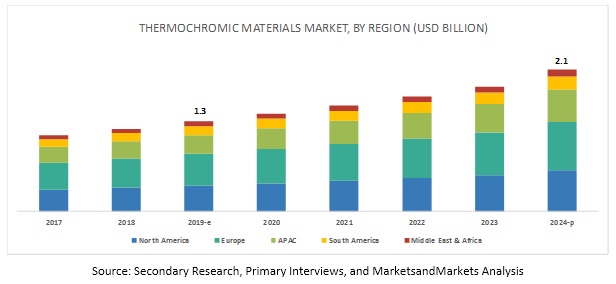Introduction:
In recent years, the global Thermochromic Materials Market has experienced exponential growth, and the outlook for the future is nothing short of promising. According to Exactitude Consultancy, this market is poised to surge past a staggering US $3.28 billion by 2029, driven by a compound annual growth rate (CAGR) of 9.3% from 2023 to 2029. This growth is not only significant but also indicative of the market's robust potential. In this article, we delve into the dynamics, drivers, and regional factors that make the Thermochromic Materials Market an attractive investment opportunity.
Unveiling Market Dynamics:
A Rapidly Evolving Landscape:
The Thermochromic Materials Market is a dynamic arena characterized by constant innovation and evolution. Manufacturers are continually pushing the boundaries of these materials, leading to new applications and heightened consumer interest. This dynamism ensures that the market remains vibrant and adaptable to the ever-changing demands of various industries.

Key Drivers of Growth:
Several factors are propelling the impressive growth of the Thermochromic Materials Market:
1. Diverse Applications:
Thermochromic materials have found applications in a wide range of industries, including packaging, printing, coating, medical, textile, and industrial sectors. Their versatility makes them indispensable in creating products that respond to temperature changes, enhancing user experience and functionality.
2. Sustainability and Environmental Concerns:
Heightened consumer awareness and the global focus on sustainable solutions have significantly boosted the adoption of thermochromic materials. These materials are not only innovative but also eco-friendly, contributing to energy conservation and aligning with global sustainability goals.

The Regional Powerhouse: Asia-Pacific
Among the key regions driving the Thermochromic Materials Market, the Asia-Pacific region stands out prominently. Here's why:
1. Manufacturing Hub:
Asia-Pacific has emerged as a global manufacturing hub, with countries like China, Japan, South Korea, and India playing pivotal roles. The presence of numerous manufacturing facilities in this region drives the demand for thermochromic materials.
2. Growing Consumer Base:
The Asia-Pacific region boasts a massive and continuously growing consumer base. As economies flourish, so does the purchasing power of consumers. This translates into increased consumption of products that incorporate thermochromic materials, further driving market growth.
3. Innovation Centers:
Asia-Pacific is home to some of the world's most innovative companies. With a strong focus on research and development, these companies are at the forefront of creating new applications for thermochromic materials. Their innovative efforts are contributing significantly to the market's expansion.

The Road Ahead:
The Thermochromic Materials Market is poised for substantial growth in the coming years. Its ability to cater to diverse industries and its eco-friendly nature make it a key player in the materials market. As the world continues to prioritize sustainability and innovation, the future of thermochromic materials looks brighter than ever.
In Summation: Unveiling a Complex Nexus:
The meticulous investigation carried out by the OCCRP into Vedanta's alleged and intricate lobbying campaign has laid bare the intricate interplay between corporate influence, government decisions, and the protection of our precious environment. The allegations, swirling with controversy and concern, bring to light the inherent tension between rapid economic growth and the imperative of ecological preservation. As these revelations reverberate across the global stage, the true complexities of this case continue to unravel, leaving us pondering the future of both corporate accountability and environmental protection.
Credits:
Writer - Deepak Yadav
Date - 01 September 2023
In Association With Angelic Valley